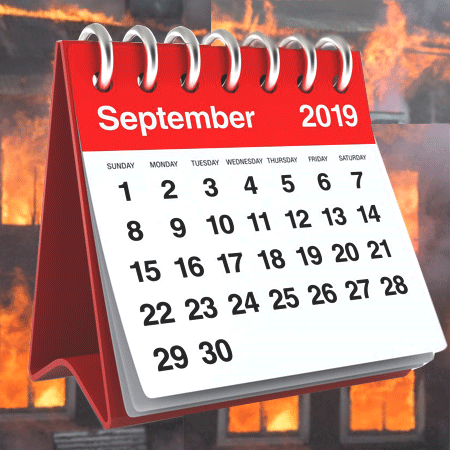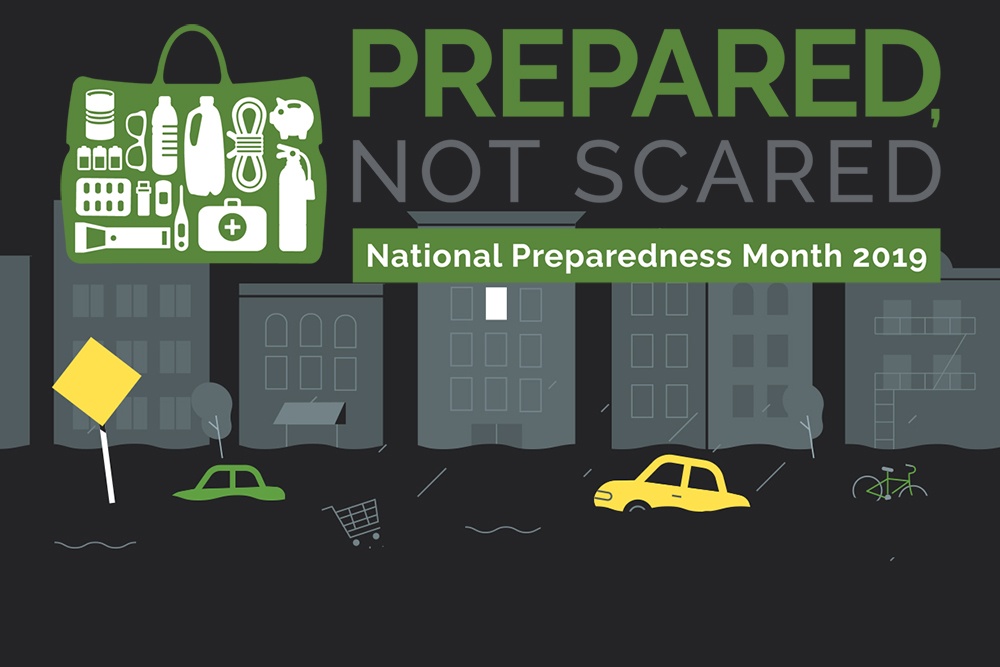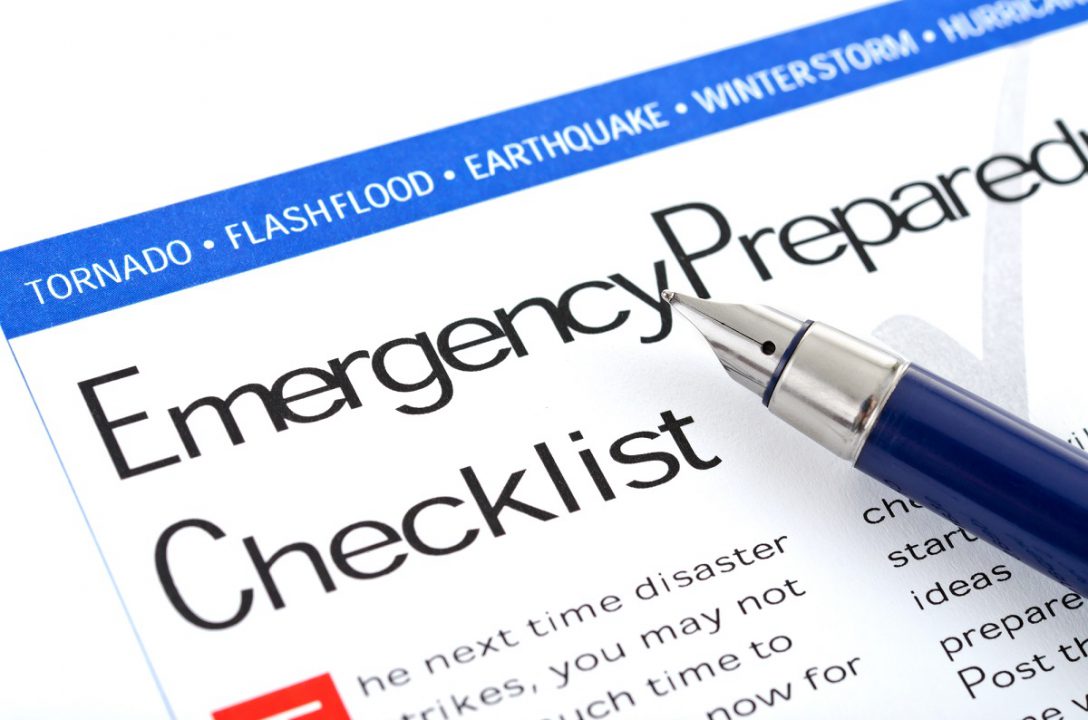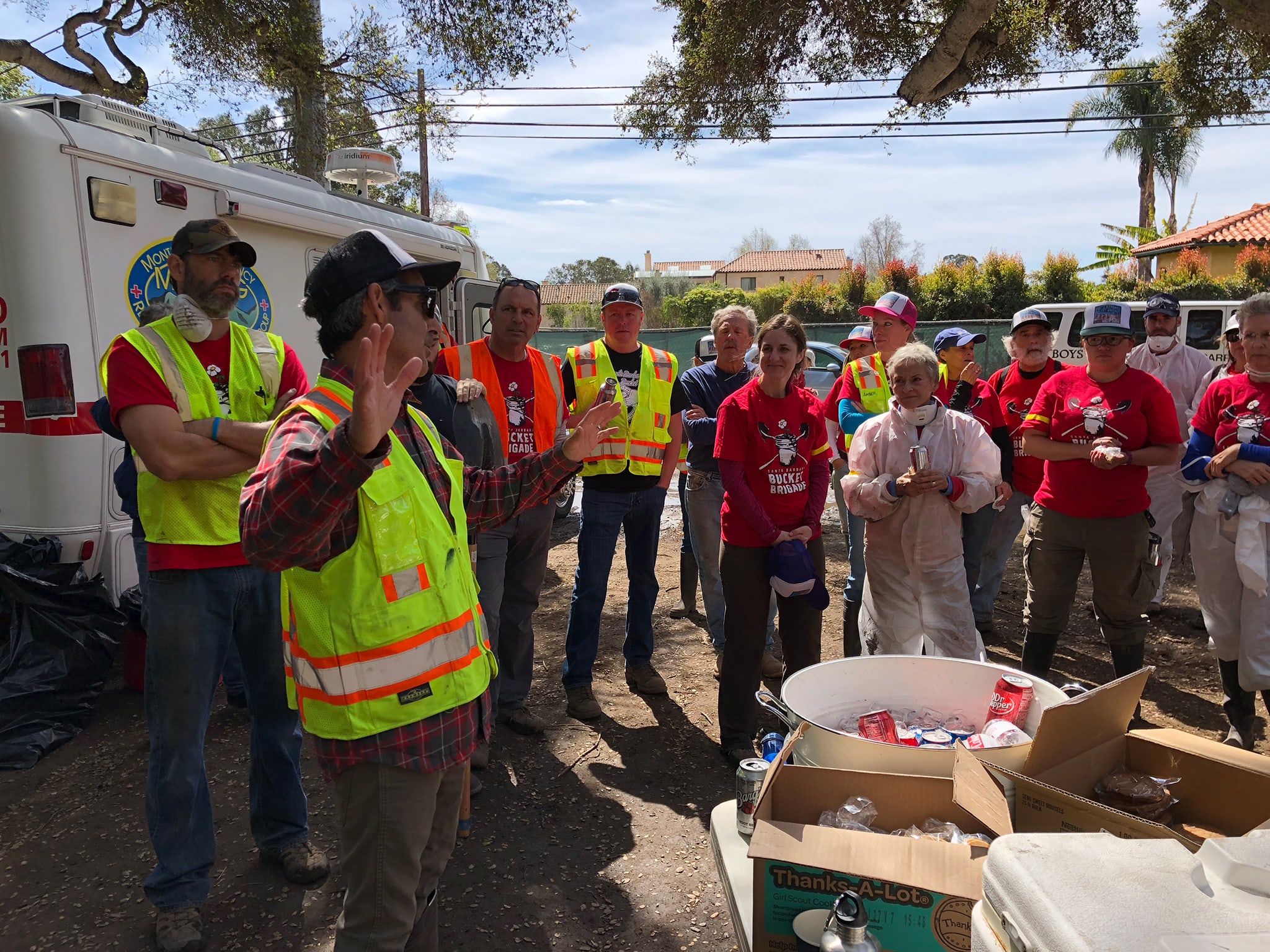
Sponsored by the Federal Emergency Management Agency and held annually in September, National Preparedness Month is a yearly reminder that disasters, whether natural or man-made, can happen anytime. This campaign promotes family and community disaster and emergency planning now and throughout the year.
Launched in 2004, the Department of Homeland Security designated September as National Preparedness Month to educate the public on the importance of disaster preparation. The National Preparedness Month is the Federal Emergency Management Agency’s national annual preparedness outreach. It is managed and sponsored by FEMA’s Ready campaign. Ready is a national public service campaign designed to educate and empower the American people to prepare for, respond to, and mitigate emergencies, including natural and man-made disasters. The goal of the campaign is to promote preparedness through public involvement. It especially aims to spread awareness to Americans during National Preparedness Month and throughout the year to prepare for and respond to all types of emergencies, including potential terrorist attacks.

offgridweb.com
National Preparedness Month culminates on September 30 with National Preparedness Day, the national day of action. For 2019, the theme is “Prepared, Not Scared.” The month is further divided into weekly themes:
- Save Early for Disaster Costs
- Make a Plan to Prepare for Disasters
- Teach Youth to Prepare for Disasters
- Get Involved in Your Community’s Preparedness
Here are some safety tips you should practice all year round.
National Preparedness Month Weekly Themes
Week 1: Save for a rainy day.
Americans at all income levels have experienced the challenges of rebuilding their lives after a disaster or other emergency. When it comes to preparing for disasters like weather emergencies, financial readiness is as important as a flashlight with fully charged batteries. Having your financial documents up-to-date, in one place, and portable can make a big difference in emergencies. If you’re missing important documents, now’s the time to replace them. Always allot a budget for unexpected out-of-pocket expenses like lodging, food, gas, and more. Review your insurance policies and update your coverage if necessary. Be prepared for the cost of deductibles for insurance and medical co-pays.
- Collect and secure financial and critical personal, household, and medical information. These include but are not limited to the following:
- Valid IDs
- Birth certificates
- Social security card
- Pet ID tags
- Housing payments
- Insurance policies
- Tax statements
- Copies of health insurance information
- Immunization records
- Medications
- Consider saving money in an emergency savings account that could be used in any crisis.
- Keep a small amount of cash at home in a safe place. ATMs and credit cards may not work during a disaster when you need to purchase necessary supplies.
- Obtain property, health, and life insurance if you do not have them. Review existing policies for the amount and extent of coverage to ensure that what you have in place is what is required for you and your family for any possible emergency.
Week 2: Always have a plan ready for disasters.
Your family may not be together if a disaster strikes, so it is important to know which types of disasters could affect your area. Discuss evacuation routes, temporary shelters, and communication plans. Know how you’ll contact one another and reconnect if separated. Establish a family meeting place that’s familiar and easy to find.

news.tccd.edu
- Sign up for alerts and warnings in your area. Public safety officials use timely and reliable systems to alert you and your family in the event of severe weather and disasters.
- Monitor radio, TV, or social media, and follow the instructions of local officials.
- Build or restock your emergency preparedness kits for home, work, and your vehicle. Include a flashlight, batteries, cash, and first-aid supplies for adults and children.
- One gallon of water per person for at least three days (for drinking and sanitation)
- At least a three-day supply of non-perishable food
- Battery-powered or hand crank radio and an NOAA Weather Radio
- Flashlight
- First-aid kit
- Extra batteries
- Whistle to signal for help
- Dust mask to help filter contaminated air
- Moist towelettes, garbage bags, and plastic ties for personal sanitation
- Wrench or pliers to turn off utilities
- Manual can opener for food
- Local maps
- GPS tracker
- Cell phone with chargers and a backup battery
GPS trackers like Trackimo are particularly useful for emergencies in this day and age. Aside from real-time location tracking capabilities, you can also set up geographic boundaries around specific areas and receive alerts via SMS whenever the device enters or exits those boundaries. Trackimo especially has an SOS button that the user can press to alert and inform authorities and chosen contacts about an emergency. The alert includes the user’s location and directions to take to reach the person.
- Write down phone numbers for emergency services, utilities, service providers, medical providers, veterinarians, insurance companies, and other services.
- Pets are part of the family, and preparing for their needs is part of the emergency plan. Train them or practice evacuating with your animals.
- Practice drills with your family regularly.
Week 3: Instill disaster preparedness in kids.
It’s highly important to teach children what to do in an emergency if they are at home or away from home. Your disaster planning, response, and recovery efforts must take into account the unique needs of children, who make up roughly a quarter of the US population. Taking steps to prepare kids for natural disasters can help reduce their anxiety when severe weather occurs in your area.
- Include children in preparedness conversations. Teach them about natural hazards like earthquakes, hurricanes, tornadoes, severe thunderstorms, ice storms, and blizzards.
- Know your child’s school emergency plan.
- Practice emergency plans regularly.
- Make sure children have emergency contacts memorized or written down.
- Teach children how and when to call 911.
Week 4: Be involved with your community in emergency preparedness.
Every community has voluntary organizations that work during disasters. Visit the National Voluntary Organizations Active in Disaster website to see what organizations are active in your community. There are also Community Emergency Response Teams (CERTs), which train volunteers to prepare for the types of disasters that their community may face. To stay ahead and offer help, you can opt to take classes in lifesaving skills like CPR, AED, first aid, and emergency response.

sbbucketbrigade.org
National Seasonal Preparedness for 2019: Safety Tips All Year Round
Ready.gov, along with FEMA, offers general preparedness tips for each season through the 2019 National Seasonal Preparedness Messaging Calendar.
Winter (December, January, February)
- Stay off the road during and after a storm.
- Stay inside where it is warm and bring pets indoors. Extreme cold can be
- deadly.
- Layer clothes to help you stay warm and change activities to stay safe.
- When using space heaters, follow manufacturer’s directions. Keep anything
- that can burn at least 3 feet away from heaters and wood stoves.
- Have a working carbon monoxide detector.
- Prepare for unpredictable weather before traveling.
- Water your tree every day.
- Turn off holiday lights when you go to bed or leave your home.
- Keep candles away from anything that can burn. Use battery-operated candles instead.
- If you shop online over the holidays, shop securely.
- Before guests arrive for the holidays check your smoke alarm batteries.
- Turn off holiday lights at night or when you leave the house.
- Keep an eye on food when cooking.
- Shop securely online over the holidays.
- Make a communications plan with your family while you’re together for the holidays.
Spring (March, April, May)
- If ordered to evacuate, leave right away. Know the route ahead of time and plan where to go.
- Know a safe location in your home in case there is a tornado.
Summer (June, July, August)
- Drink plenty of water throughout the day. Extreme heat can be deadly. Stay inside where it is cool.
- Wear cool clothes and try to stay out of the heat for long periods of time.
- Look before you lock. Never leave children, disabled adults, or pets in parked vehicles.
- Report a wildfire if you see one; you may be the first to see it.
- Wildfires can kill. If ordered to evacuate, know the route and plan where to go.
- Remove debris and keep anything that can burn at least 10 feet from your home.
- History shows that storm tracks can change quickly and unexpectedly. Monitor local news, weather and social media.
- If local officials give the order to evacuate or shelter in place, take action to do so.
- Storm surge and inland flooding pose a significant threat to life and property and can occur before, during or after the center of the storm passes through.
Autumn (September, October, November)
- Help your children memorize emergency contacts or write them in a secure place.
- Know the emergency plan for your child’s school, college, and child care facility.
- Practice evacuation plans and other emergency procedures with children on a regular basis.
Conclusion
September is National Preparedness Month, but every day of the year is a great time to help individuals and families in your community, as well as employees and students, be prepared for any crisis. No matter where you live, you are subject to disasters. Natural disasters and man-made disasters affect everyone and will cause severe damage and endanger lives. From hurricanes, tornadoes, earthquakes, landslides, and wildfires to hot spells and cold spells, all natural disasters can be deadly to people and damaging to property. Man-made disasters such as terrorism, crime, power outages, famines, or war are just as terrifying. Preparation is essential for the safety of you and your family. It can also ensure valuable personal possessions are taken care of properly before you lose them.
When posting on your social media accounts about safety tips this month, don’t forget to use the hashtag #NationalPreparednessMonth.
Watch the video below